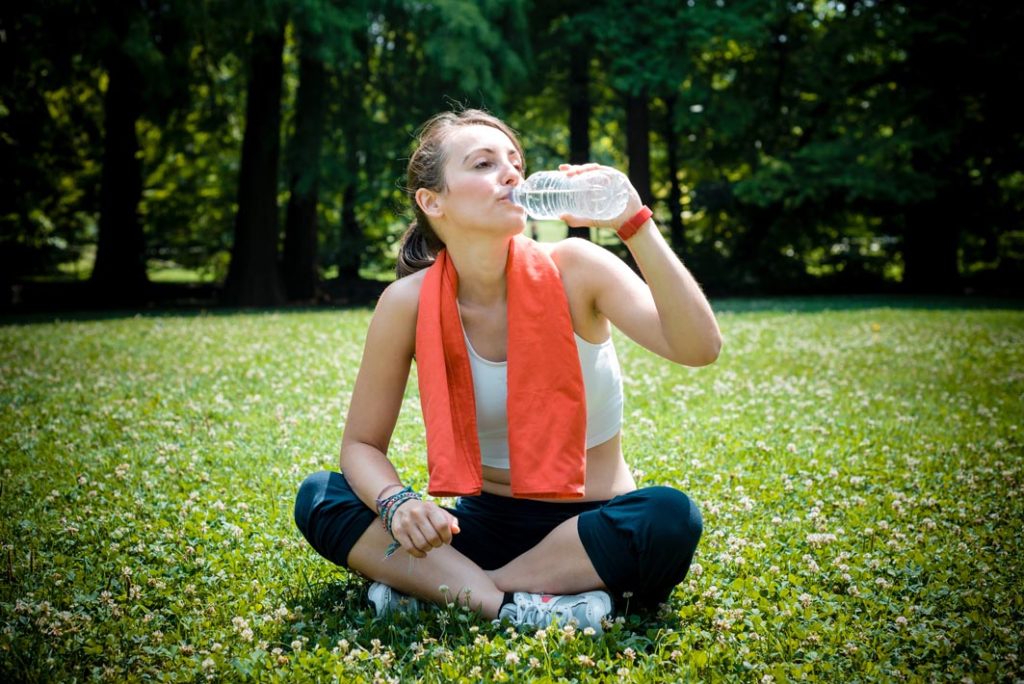 Even though it’s late Spring here in Raleigh, we’ve already seen a few days of high humidity and soaring temperatures. Many jobs that require being outside at the hottest time of day or performing labor-intensive work in the heat and humidity can expose your body to heat-related stress. While one of the benefits of living in North Carolina are the many exciting and fun ways to have fun outdoors during most of the year, even fun in the sun can risk exposing yourself to heat illnesses.
Even though it’s late Spring here in Raleigh, we’ve already seen a few days of high humidity and soaring temperatures. Many jobs that require being outside at the hottest time of day or performing labor-intensive work in the heat and humidity can expose your body to heat-related stress. While one of the benefits of living in North Carolina are the many exciting and fun ways to have fun outdoors during most of the year, even fun in the sun can risk exposing yourself to heat illnesses.
Bad sunburns can lead to discomfort or skin disorders down the road, but heat illnesses can have immediate or deadly consequences. In order to properly protect yourself, your employees, or your family, it’s best to learn the different kinds of heat illnesses and the symptoms they present.
What Happens During Heat Illnesses?
As you expose yourself to hot temperatures or exert yourself in the sun, your body works to cool itself down by sweating. However, after prolonged amounts of time under intense exposure to heat, your blood will start to rush to the surface of your skin and less blood reaches your heart, brain, kidneys, and other organs. Excessive sweating leads to dehydration, which combined with less blood reaching your vital organs means impaired strength, mental capacity, and leads to your body beginning to shut down.
Types of Heat Illnesses
There are several kinds of heat-related illnesses that can start from too much exposure to heat and sunlight. There are several symptoms that each illness share but it’s important to recognize the differences in order to properly treat the problem.
Heat Rash
Heat rash – it’s not just for babies anymore. It normally occurs in between skin folds on the body such as armpits or the groin, or in places where clothing causes friction against the skin while out in hot or humid weather. The rash is caused when sweat ducts in the skin become blocked, and cause red blisters and bumps that range from small, almost unnoticeable nodules to pus-filled or flesh-colored lesions.
Heat rash normally clears on its own by cooling the skin and ending heat exposure. You or your child should see a doctor if the symptoms last more than a few days or if it looks like an infection has taken hold, marked by draining pus, fever, chills, swollen lymph nodes, or increased pain or swelling around the area.
Heat Cramps
Heat cramps are characterized by very painful but short muscle spasms caused by strenuous physical activity while in or after being in a hot environment. They most often occur in your calves, thighs, and shoulders. This is caused by dehydration and loss of electrolytes while exercising or working.
Treatment for heat cramps is resting in a cool place and drinking water or a sports drink. The cramps will normally go away on their own, but they can accompany heat exhaustion. If you experience dizziness, fatigue, shortness of breath, or nausea, seek medical attention immediately.
Heat Fainting
Also known as heat syncope, heat fainting is the result of overheating. The main symptom is fainting and tends to be accompanied by dizziness, mental confusion, nausea, and vomiting. You may also experience pale, sweaty skin that remains cool. Similar to heat rash and heat cramps, it is caused by physical activity in the heat with blood rushing to the surface of the skin to the extent that the brain doesn’t receive enough oxygen.
Treatment for heat fainting is the same for heat cramps: rest in a cool area and drink cold water or fluids with electrolytes or sodium. Elevating the feet can help with blood flow to the head. Though heat fainting might present itself with mild symptoms, you should still see a medical professional to ensure that the condition doesn’t turn severe.
Heat Exhaustion and Heat Stroke
Heat exhaustion is a serious condition that can lead to heat stroke and should be taken very seriously. Heat cramps and heat fainting can be symptoms of heat exhaustion, in addition to heavy sweating, weakness, confusion, vomiting, nausea, rapid pulse, and dark urine. The elderly and infants are at the most risk for heat exhaustion.
Heat exhaustion can turn into heat stroke, which is categorized by a fever of 104˚ or higher, flushed skin, lack of sweating, breathlessness, and seizures. Heat stroke can lead to organ failure, brain damage, or shock. If you suspect that you or someone you know to be suffering from heat exhaustion or heat stroke, seek medical attention immediately. Quickly get out of the heat, elevate your legs, remove tight clothing, and apply cold, wet towels to the body. Sip, do not guzzle, fluids like water or sports drinks. Call 911 if their fever doesn’t subside, if they start to suffer from seizures or shock, or if they stop breathing.
Contact your Raleigh primary care physicians for treatment or advice
If you have more questions about how to protect yourself from heat related illness or want a check up following heat illness, contact Med One Medical Group today by calling 919-850-1300.